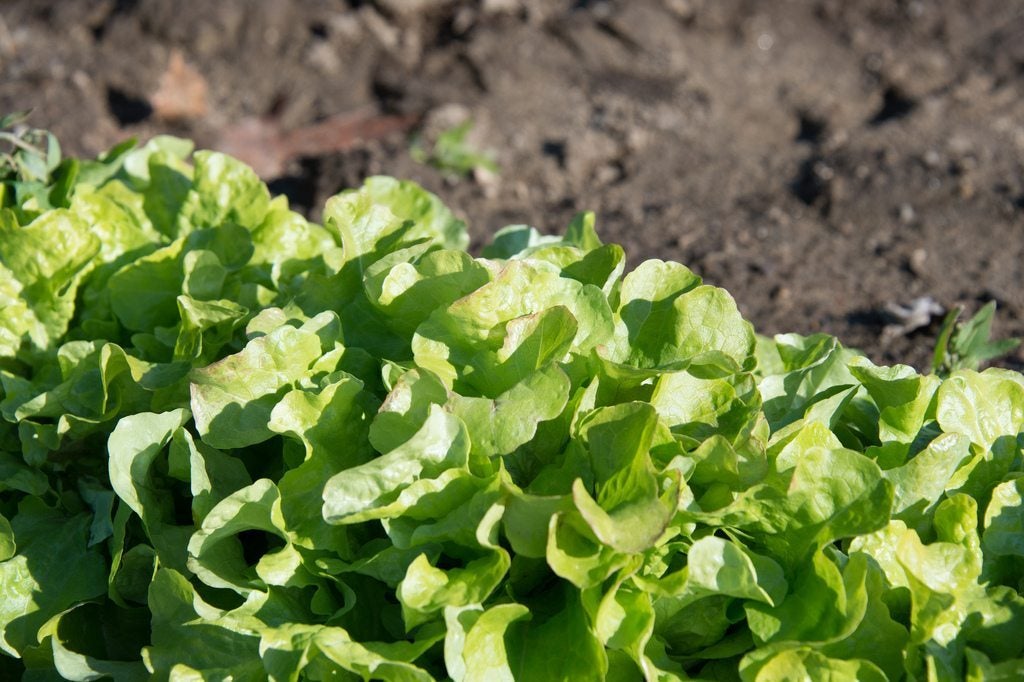What Causes Tipburn In Lettuce: Treating Lettuce With Tipburn

Lettuce, as all crops, is susceptible to a number of pests, diseases, and disorders. One such disorder, lettuce with tipburn, affects commercial growers more than the home gardener. What is lettuce tipburn? Read on to find out what causes tipburn of lettuce and how to manage tipburn in lettuce.
What is Lettuce Tipburn?
Tipburn of lettuce is actually a physiological disorder similar to blossom end rot in tomato. The symptoms of lettuce with tipburn are exactly as they sound, usually the ends or edges of the leaves browning. The brown area may be confined to a few small dots at or near the leaf margin or may affect the entire edge of a leaf. Brown veins may occur near the brown lesions. The brown spots merge and eventually form a brown fringe along the margin of the leaf. Generally young, maturing leaves in head and leaf lettuces become afflicted with tipburn. Leaf lettuce, butterhead, and endive are more susceptible to tipburn than crisphead varieties.
What Causes Tipburn in Lettuce?
Tipburn is related to calcium, not low soil calcium, but rather the ability of the rapidly growing tissues of the lettuce to avail itself of the calcium. Calcium is required for strong cell walls. It usually occurs during hot weather when the lettuce is rapidly growing, making for uneven distribution of calcium in the plant. It affects the outer leaves because they are the ones that transpire more than the inner leaves.
Management of Tipburn in Lettuce
Susceptibility to tipburn varies from cultivar to cultivar. As mentioned, crisphead lettuces are less susceptible. This is because they transpire less than leaf lettuces. Plant less susceptible varieties of lettuce to combat tipburn. Calcium sprays may have some benefit but, again, this disorder is not related to calcium in the soil but rather as to how it is distributed within the plant. What seems to be more important is managing water stress. Consistent irrigation facilitates the transportation of calcium to the plant, which will reduce the incidence of tipburn. Finally, tipburn is not harmful. In the case of commercial growers, it does reduce salability, but for the home grower, simply snip off the browning edges and consume as usual.
Gardening tips, videos, info and more delivered right to your inbox!
Sign up for the Gardening Know How newsletter today and receive a free copy of our e-book "How to Grow Delicious Tomatoes".

Amy Grant has been gardening for 30 years and writing for 15. A professional chef and caterer, Amy's area of expertise is culinary gardening.
-
 8 Perfect Flowers To Plant With Tomatoes To Boost Yields & Banish Pests
8 Perfect Flowers To Plant With Tomatoes To Boost Yields & Banish PestsDon’t forget flowers when choosing companion plants for your tomato beds or pots. These pretty, fragrant flowers add beauty but are also highly beneficial.
By Mary Ellen Ellis
-
 Want The Longest Lasting Hydrangea Flowers? Grow These 8 Panicle Hydrangea Varieties
Want The Longest Lasting Hydrangea Flowers? Grow These 8 Panicle Hydrangea VarietiesFor ornamental shrubs that deliver the longest flowering seasons with plush blooms and delicate hues, these panicle hydrangea varieties are essential in your yard
By Tonya Barnett